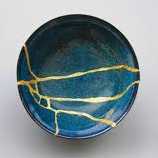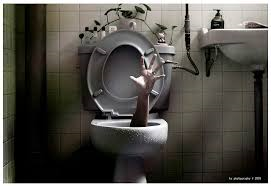
Kintsugi: the art of being broken, the value and beauty of the healed
As a philosophy, kintsugi can be seen to have similarities to the Japanese philosophy of wabi-sabi, an embracing of the flawed or imperfect.[9] Japanese aesthetics values marks of wear by the use of an object. This can be seen as a rationale for keeping an object around even after it has broken and as a justification of kintsugi itself, highlighting the cracks and repairs as simply an event in the life of an object rather than allowing its service to end at the time of its damage or breakage.[10] Kintsugi can relate to the Japanese philosophy of “no mind” (無心 [-MORE-]

